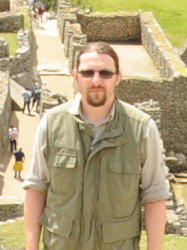BibTex format
@article{Garwood:2019:10.1017/s0016756819000670,
author = {Garwood, RJ and Oliver, H and Spencer, ART},
doi = {10.1017/s0016756819000670},
journal = {Geological Magazine},
pages = {1--18},
title = {An introduction to the Rhynie chert},
url = {http://dx.doi.org/10.1017/s0016756819000670},
year = {2019}
}

